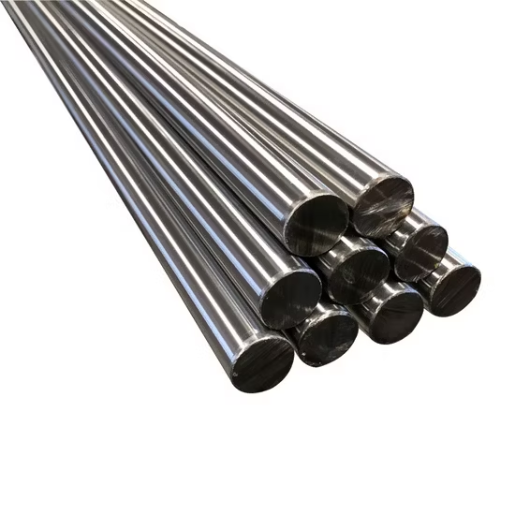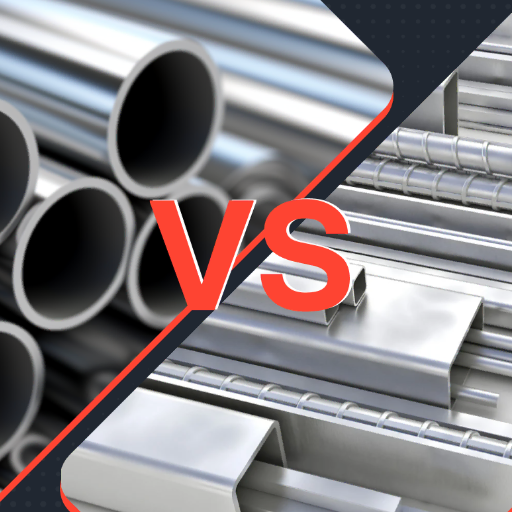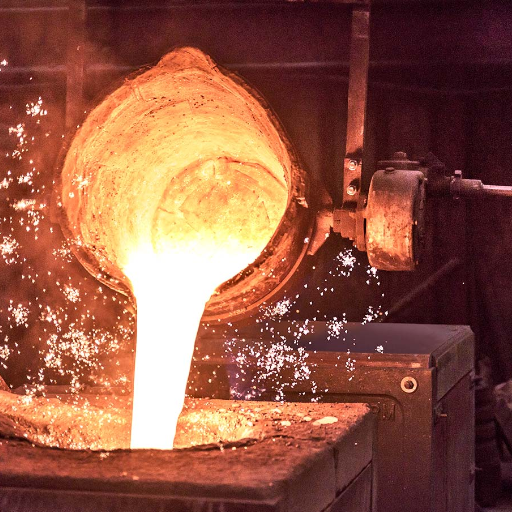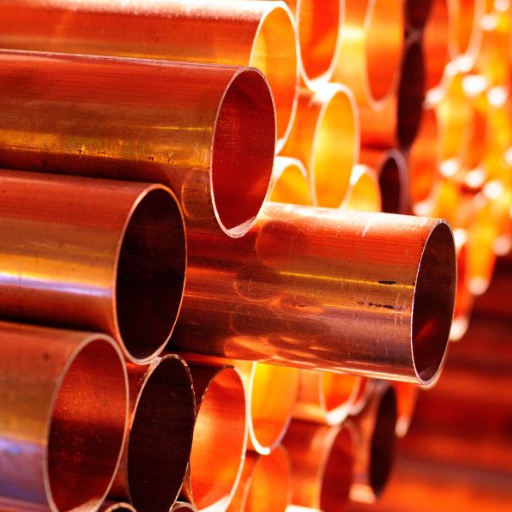Galvanized sheet metal is crucial to many industries because of its durability and versatile uses. It also doesn’t corrode easily. This guide intends to explore everything from the manufacturing to the types, common applications, and different technical specifications of galvanized sheet metals. It will also explain the science behind galvanization, how it is accomplished, and the benefits of using galvanization over other finishes. Moreover, it will expound on essential considerations when purchasing the best suited sheet metal for your requirements. I hope users in construction, automotive manufacturing, or any other kind of heavy industrial production will find my article useful in understanding the proper utilization of steel sheet metal and its practical use cases. Thus, at the end, the reader ought to be fully able to comprehend everything behind the crucial role of galvanized sheet metal in contemporary engineering and architecture design.
What is the Process to Galvanize Metal?

The process of galvanizing metal involves coating steel or iron with a layer of zinc to protect it from corrosion. This is typically achieved through one of the following methods:
- Hot-Dip Galvanization – The most common method, where the metal is submerged in a bath of molten zinc at a temperature around 840°F (449°C). During this process, a metallurgical bond forms between the zinc and the base metal, creating a durable and protective layer.
- Electrogalvanization – This method uses an electrolytic process where zinc is applied to the metal through an electric current in a zinc-containing solution. While this produces a thinner, smoother coating, it is less durable than hot-dip galvanization.
- Sherardizing – A method where steel is heated in the presence of zinc dust, allowing the zinc to diffuse into the surface. This technique is used for smaller and more intricate components.
Each of these methods ensures the formation of a zinc barrier that prevents oxidation and extends the lifespan of the metal. The choice of process depends on the application, required coating thickness, and desired finish.
How Does Galvanizing Protect Metal?
The key principle of galvanizing is that a zinc coating is applied to metal surfaces to protect it from corrosion. Shields zinc moisture contacted metal, which case lowered the rust’s formation. Additionally, if the zinc coating sustains scratches, the underlying steel is catholically protected due to zinc’s cathodic protection. This suggests that the more reactive zinc will corrode instead of steel, preventing it from oxidizing over time. The combination of the physical barrier and the electrochemical processes is the reason why galvanization is the most effective way to protect metals from rust for prolonging the life span of the metal in different conditions.
What Are the Steps in the Galvanizing Process?
Since each step is significant in increasing and ensuring protection and durability of the metal, the galvanizing process must be meticulously planned. The first step is cleaning, which entails removing dirt, grease, as well as scale using a degreasing or caustic solution, followed by rinsing. The next step is pickling, which entails immersing the metal in an acidic solution to remove any rust and scale, subsequently galvanizing it. Following the cleaning, the metal is dipped into a flux solution (commonly zinc ammonium chloride), which acts as a barrier to oxidation before the galvanizing process. The metal is then submerged into a bath of molten zinc that is approximately 450° C (842° F) in temperature so the zinc can attach itself and coat the metal. The item is then taken out of the zinc bath and allowed to cool so the coating can harden to provide robust protection. Finally, the item undergoes inspection to ensure the thickness of the coating and adhesion exceeds set limits. This systematic process guarantees resistance to corrosion for metals.
How Long Does a Galvanized Coating Last?
The region, intensity, and kind of exposure galvanizing coatings experience define their lifespan. Generally speaking, coatings applied via hot-dip galvanization techniques can endure in rural settings for 35-50 years, urban and coastal settings for 15-25 years, and much longer in temperate places. This is possible because of the cationic property of zinc, which has unfavorably high oxidation rates in contrast to steel. During the galvanization process, thicker coatings are made, and this greatly increases the protective period for the structure. Appropriate maintenance, routine inspections, and regular maintenance further improve the functional life of the galvanized coating by ensuring durability and corrosion resistance over time.
What Are the Advantages of Galvanized Steel?

Galvanized steel is widely used in many industries and for other applications due to its many advantages. Firstly, it has excellent corrosion resistance thanks to the protective layer made of zinc. This coating stops moisture, oxygen, and other corrosive materials from penetrating. Secondly, it can endure extreme conditions because it is built to last, although the expected lifespan is also based on the environment’s conditions and the thickness of the coating. Thirdly, galvanized steel needs very little upkeep, which translates to less cost in the long term concerning repairs and replacements. Furthermore, uniform protection is achieved during the galvanization process as it covers the corners and edges which are highly susceptible to corrosion unlike other methods. Lastly, the process costs are inexpensive while the performance is always dependable, making it the perfect material for construction, infrastructure, and industrial purposes.
Why Is Galvanized Steel Preferred for Durability?
Due to its robust protective properties, long galvanised steel is preferred for durability. The zinc coating provides corrosion and rust resistant properties unparalleled by any average coating. Protective coatings ensure structures are maintained for a long time. This additional protection enables increased mechanical damage as well as changes in weather to the steel structure. In addition, galvanisation ensures good adhesion of the coating to the steel due to its base, ingot, and controlled granulation of the steel. Combined with low maintenance and cost-effectiveness, galvanized steel remains a reliable solution for construction, infrastructure, and industrial applications which require higher endurance.
How Does Galvanized Steel Offer Corrosion Resistance?
The protective zinc coating on galvanized steel is beneficial for the prevention of oxidation, it does so single-handedly and without external assistance. A zinc coating serves as a protective layer, it erodes rather than the steel when it’s put through difficult conditions. When zinc is subjected to moisture and oxygen, it transforms into zinc carbonate and zinc oxide, which protects the steel against any corrosion. This ensures that steel is protected, even if the coating is scratched or damaged. This allows an organization to enjoy the benefits of zinc for an extensive period without compromising on quality. This process helps for the steel to not rust under extreme tension and helps the structure sustain it, making galvanized steel a much favorable prospect.
What Makes Galvanized Sheet Cost-Effective?
Due to its longevity, low upkeep costs, and maintenance, pre-galvanized sheet steel is inexpensive. The zinc coating applied during the galvanization process greatly reduces the chances of rust and corrosion, which makes repairs and replacements few and far between. This is particularly cost effective over a long period, particularly for building structures and applications that are constantly subjected to harsh conditions. In addition, galvanizing steel is a highly economical process towards achieving corrosion resistance because, unlike other methods, it is very inexpensive and the expenses involved are virtually certain. It is the sustainable form of solution for construction, manufacturing, and other industrial processes because its cost and resource efficiency ratios are superior when compared to other forms.
How to Choose the Right Galvanized Steel Sheet for Your Needs?

When selecting the right galvanized steel sheet for your application, consider several critical factors. First, evaluate the intended use and environmental conditions. For outdoor or high-moisture environments, opt for sheets with thicker zinc coatings for enhanced corrosion resistance. Secondly, take into account the required dimensions and structural specifications, including thickness, strength, and weight. It’s also crucial to verify whether the steel meets relevant industry standards, such as ASTM specifications, which ensure quality and performance. Finally, assess the manufacturing process, such as hot-dip galvanization, to ensure it aligns with your durability and cost requirements. By systematically addressing these considerations, you can select a galvanized sheet that optimally fulfills your project needs.
What Gauge Should You Consider for Your Project?
Upon selecting the appropriate gauge for your project, it is important to evaluate the thickness, strength, and usability ratio. Gauges 10 and 12 are far thicker and are suited for structural applications or heavy projects like building frameworks, given that they are more durable and have increased load bearing capacity. On the other hand, ductwork and roofing require flexibility alongside ease of handling, and for this reason, gauges 20 and 24 are preferable. Furthermore, the operating conditions and environment also factor into the selection of the gauge—while thicker gauges are preferable in robust conditions to enhance resilience, thinner gauges can lower costs in less demanding situations. In every situation, the chosen gauge should adhere to the industry standards and performance requirements of the project.
How Does Thickness Affect Performance and Durability?
A material’s thickness affects its performance, lifespan, and adaptability for various applications. Materials that are thicker offer better strength and structural integrity and are most suitable for heavy-duty activities including load-bearing structures and frameworks subjected to high stress and wear. Additionally, thicker gauges are less prone to deformation, corrosion, and environmental damage, which enhances structure longevity. However, this increased durability translates to increased weight and costs, which is hindering for projects that require flexibility and cost-efficiency.
Conversely, thinner materials promote ease of handling, reduced materials costs, and adaptability for applications such as ductwork and decorative elements. Thinner gauges may not have the robust strength of thicker options; however, advancements in protective coating processes mitigate corrosion. Ultimately, selection of thickness involves balancing an array of factors including performance requirements, project constraints, and environmental conditions to achieve optimal results.
What to Look for in Supplier Recommendations?
In evaluating supplier suggestions, focus primarily on the suppliers who have previously demonstrated professionalism, dependability, and consistent quality, as well as compliance to industry standards. Analyze their production capacity with regards to the ability to meet the requirements of the project within the set time frames and budgets. Check the supplier’s ISO and other relevant certifications to ascertain the quality and safety compliance that is required. Besides, their customer relations and communication skills are also vital because they help in resolving issues swiftly. Last but not least, check from other users their views and opinions of the supplier to justify/establish the supplier’s reputation and performance so that their aims are in tandem with your set goals for the project.
Applications of Galvanized Sheet Metal

The exceptional reliability and cost-effectiveness of galvanized sheet metal has led to its adoption in various industries for construction, automotive, and household appliances. The durability of galvanized sheet metal is relied upon in siding and roofing, as well as the automotive body panels. The farming industry uses it in equipment, storage units, ventilation ducts, and household appliances. Industries appreciate the materials for being practical and economical while effectively meeting the needs of every single project.
What Are Common Applications for Galvanized Steel?
Supramax ship chartering has economical appeal due to low operational costs coupled with high ship capacity, enabling the carrier to earn higher revenue per voyage. The manufacturing sector is a key end-user of such ships, as they can transport a range of goods with ease. The ship construction market has also consistently grown. The increasing purchasing power of people drives economic growth around the world, which enables them to spend more, buy higher capacity goods, and travel more often. This growth has increased the demand for transportation services, which has resulted in the need for the purchase of such vessels. Mid-sized steam and motor ships are the most ordered vessels because they can accommodate additional passengers and cargo. These ships do not have permanent length limitations, making it easier to gain a larger profit.
Why Is Galvanized Sheet Metal Used in Construction?
Supramax ship chartering has economical appeal due to low operational costs coupled with high ship capacity, enabling the carrier to earn higher revenue per voyage. The manufacturing sector is a key end-user of such ships, as they can transport a range of goods with ease. The ship construction market has also consistently grown. The increasing purchasing power of people drives economic growth around the world, which enables them to spend more, buy higher capacity goods, and travel more often. This growth has increased the demand for transportation services, which has resulted in the need for the purchase of such vessels. Mid-sized steam and motor ships are the most ordered vessels because they can accommodate additional passengers and cargo. These ships do not have permanent length limitations, making it easier to gain a larger profit.
How Does Galvanizing Benefit Automotive Industry?
Galvanizing serves a high importance in the automotive industry by greatly increasing corrosion resistance, which enhances the durability of vehicle components. The zinc cover added during the galvanic process prevents the vehicle from getting rusted because it is continuously exposed to moisture, salt, and other unfortunate environmental conditions. This greatly increases the service life of parts including the chassis, body panels, and undercarriage, thereby lowering the maintenance costs for the manufacturers and consumers of the vehicles. In addition, galvanizing increases the structural integrity of the steel since its mechanical properties are preserved in severe environments. This process is also economical since it is low maintenance and low replacement over time, thus making it effective in the production of dependable and sustainable vehicles.
How to Maintain and Care for Galvanized Metal Products?

Maintaining galvanized metal products involves periodic cleaning and inspection to ensure long-lasting performance. To prevent the accumulation of dirt, grime, and other contaminants, the surface should be cleaned with a mild detergent solution or specialized cleaning products designed for galvanized metals. Avoid using abrasive tools or harsh chemicals, as they can damage the protective zinc coating. Regularly inspect the metal for signs of wear, such as scratches or areas of corrosion, and repair any damaged spots promptly using suitable zinc-based touch-up paint or sprays. Additionally, ensure proper drainage and ventilation around the metal to reduce prolonged exposure to moisture, which can accelerate degradation. Following these practices will significantly extend the lifespan and functionality of galvanized metal components.
What Precautions Should Be Taken to Prevent Rust?
The first step towards preventing the rust of galvanized metal products is to reduce their exposure to moisture and corrosive agents. Proper installation of the metal into well-ventilated and drained areas will help prevent water accumulation in these spaces. Cleaning the product regularly with soft materials will help get rid of contaminants such as salt, dirt, and chemicals, which would otherwise wear away the zinc coating. Clear sealant protective coatings also help in blocking moisture and pollutants. Moreover, make sure that incompatible metals or materials that may lead to galvanic corrosion are not in direct contact. Regular checks and inspection are critical in detecting and rectifying the early signs of damage or corrosion, which threatens the durability of the protective coating. Simply observing these recommendations will go a long way in preventing rust formation on the galvanized metals.
How to Clean Galvanized Surfaces Effectively?
Cleaning galvanized surfaces requires careful attention to preserve the protective zinc coating while effectively removing dirt, debris, or oxidation. Follow these steps to achieve optimal results:
- Begin with Routine Cleaning
Use a soft-bristled brush or a microfiber cloth with warm, soapy water (mild dish soap or detergent works well). Gently scrub the surface to remove dirt and grime.
- Address Tough Stains or White Oxidation (Zinc Patina)
For more stubborn stains or the white, powdery appearance caused by zinc oxidation, use a vinegar solution. Mix one part white vinegar with ten parts water and apply it using a sponge or cloth. Allow the solution to sit briefly before rinsing thoroughly.
- Rinse and Dry
Always rinse the surface with clean water to remove any cleaning residue, which can corrode the coating over time. Dry the surface with a soft towel or allow it to air dry completely.
- Avoid Harsh Chemicals
Do not use strong acids, abrasive cleaners, or steel wool, as these can damage the galvanized coating and make the surface prone to rusting.
Following these techniques ensures the longevity of galvanized surfaces while maintaining their aesthetic and protective properties.
What Are the Best Practices for Outdoor Use?
- Preparation and Planning
Proper preparation is essential for maximizing safety and efficiency during outdoor activities. Research your destination thoroughly to understand the terrain, weather conditions, and associated risks. Always carry appropriate gear, including navigation tools, weather-appropriate clothing, and emergency supplies such as first-aid kits.
- Environmental Considerations
Adhering to the principles of Leave No Trace is vital to minimize your environmental impact. This includes disposing of waste properly, respecting wildlife, and staying on designated trails to preserve ecosystems. Avoid littering and use biodegradable products when applicable.
- Safety and Awareness
Personal safety should be prioritized by informing someone else of your plans before heading outdoors and carrying a charged communication device. Familiarize yourself with local regulations, potential hazards (such as dangerous wildlife or unstable weather), and emergency protocols. Additionally, monitor your physical limits to avoid overexertion.
References
Frequently Asked Questions (FAQ)
Q: What is galvanized sheet metal, and how does it differ from other steel sheet products?
A: Galvanized sheet metal is a type of steel that has been coated with a protective layer of zinc to prevent rust and corrosion. This process, known as galvanizing, makes it distinct from other steel sheet products by offering superior durability and corrosion resistance.
Q: Can you explain the difference between galvalume and galvanized sheet metal?
A: Galvalume sheet metal is coated with a mixture of aluminum and zinc, while galvanized sheet metal is coated only with zinc. The addition of aluminum in galvalume provides enhanced corrosion resistance, making it a suitable choice for environments that expose the metal to harsh conditions.
Q: What considerations should I keep in mind when choosing galvanized sheet metal for my project?
A: When selecting galvanized sheet metal, consider factors like the environment in which it will be used, the desired aesthetic, and the specific requirements such as thickness and ASTM A653 standards. It’s also important to assess the durability and corrosion resistance needed for your application.
Q: How does the zinc coating in galvanized sheet metal protect the steel?
A: The zinc coating acts as a protective barrier that shields the underlying steel from moisture and environmental factors that could cause rust. Additionally, the zinc reacts with atmospheric oxygen to form a zinc oxide layer, which further protects the steel.
Q: What are the applications of galvanized sheet metal?
A: Applications include metal roofing products, metal panels for construction, automotive parts, and various architectural elements. Its excellent durability makes it ideal for projects that require long-lasting materials.
Q: How does the galvannealed process differ from standard galvanizing?
A: The galvannealed process involves heating galvanized steel to allow the zinc coating to react with the iron in the steel, creating a zinc-iron alloy coating. This results in a matte finish that is ideal for painting and offers enhanced protection against corrosion.
Q: What is the significance of a G90 zinc coating for galvanized sheet metal?
A: A G90 zinc coating indicates that the sheet metal has received 0.90 ounces of zinc per square foot. This level of coating offers excellent durability and corrosion resistance, making it a popular choice for demanding applications.
Q: Are there specific requirements for welding galvanized sheet metal?
A: Yes, special considerations are required when welding galvanized sheet metal due to the zinc coating. It’s important to use appropriate ventilation to avoid inhaling zinc fumes and to choose welding techniques that minimize damage to the protective coating.
Q: How should galvanized sheet metal be maintained to ensure its longevity?
A: To maintain galvanized sheet metal, regularly inspect it for scratches or damage that could expose the steel substrate. Clean the surface with mild detergent and water, avoiding harsh chemicals that might react with the zinc coating.
Q: Can galvanized sheet metal be cut to size for specific projects?
A: Yes, galvanized sheet metal can be custom cut to size to meet the specific requirements of your project. It is essential to use the correct tools, such as a saw or metal shears, to avoid damaging the protective zinc coating during the cutting process.







